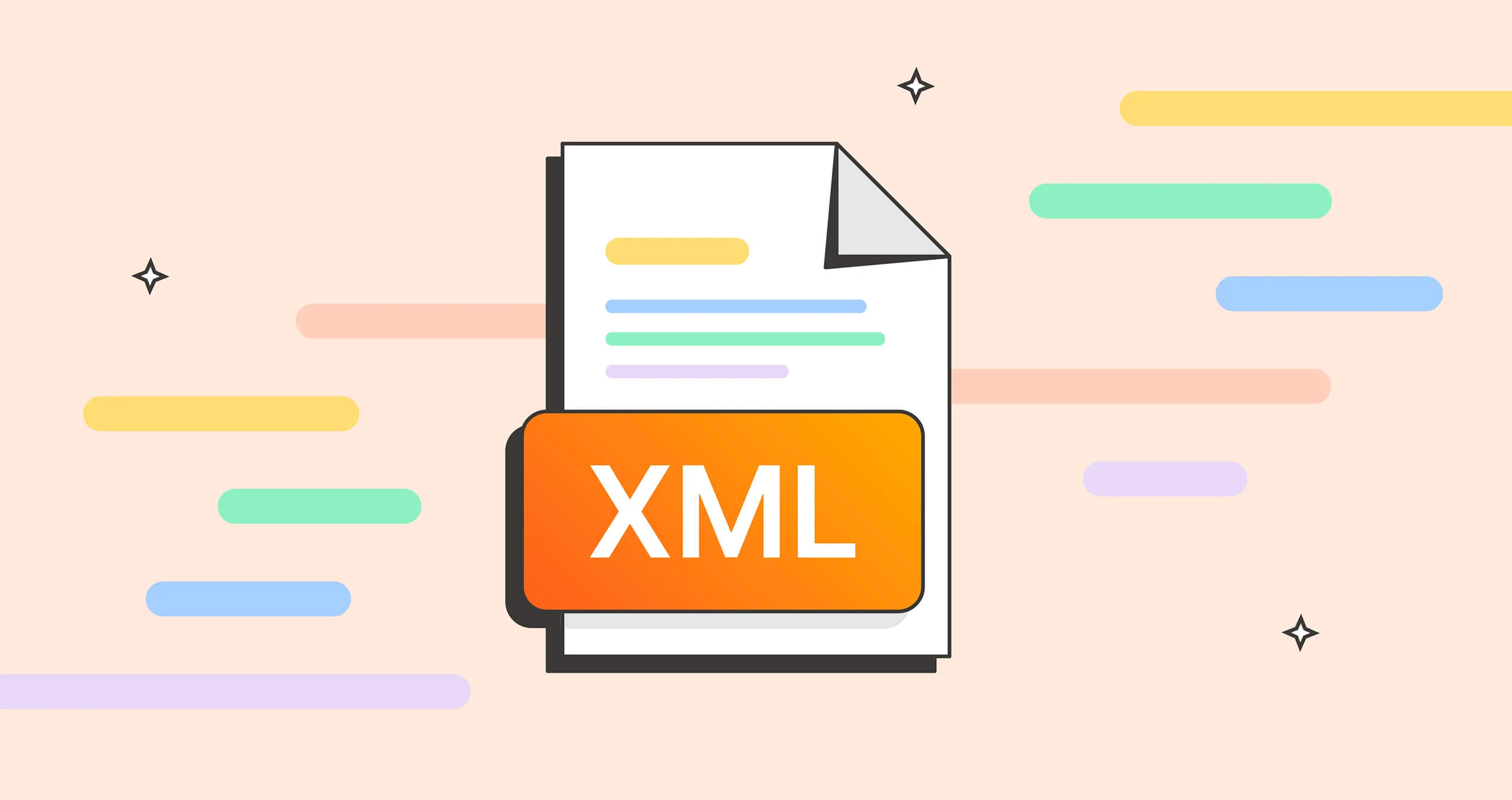Fetch XML using fetch() and parse it with DOMParser. 2. Extract data using DOM methods like getElementsByTagName or querySelector. 3. Optionally use xml2js to convert XML to JSON for easier handling. 4. Handle CORS via proxy or backend API. 5. For production, preprocess XML to JSON on the server. The key is converting XML to JavaScript objects early for seamless React integration.

Integrating XML data with a React front-end isn't as straightforward as working with JSON, since React and modern web APIs are optimized for JSON by default. However, many legacy systems, feeds (like RSS), and enterprise services still use XML. So, if you're building a React app that needs to consume XML data, here's how to do it effectively and efficiently.

1. Fetch and Parse XML from an API or File
First, you’ll need to fetch the XML data using fetch() or another HTTP client like Axios. Once received, you can't use response.json()—instead, you’ll parse the raw text into a DOM-like structure using the browser’s built-in DOMParser.
useEffect(() => {
fetch('/data.xml')
.then(response => response.text())
.then(str => new DOMParser().parseFromString(str, 'text/xml'))
.then(data => {
// Now 'data' is a parsed XML document
console.log(data);
// Process the XML here
})
.catch(err => console.error('Error parsing XML:', err));
}, []);?? Note: XML parsing can fail silently or return parsing errors in the DOM (e.g.,
<parsererror>elements), so always validate the result.
2. Extract Data from Parsed XML
Once you have a parsed XML document, you can use standard DOM methods like getElementsByTagName, querySelector, or getAttribute to extract values.
For example, given this XML:
<books>
<book id="1">
<title>React Guide</title>
<author>John Doe</author>
</book>
<book id="2">
<title>Advanced XML</title>
<author>Jane Smith</author>
</book>
</books>You can extract it in React like this:
const books = Array.from(xmlDoc.getElementsByTagName('book')).map(book => ({
id: book.getAttribute('id'),
title: book.getElementsByTagName('title')[0].textContent,
author: book.getElementsByTagName('author')[0].textContent,
}));Then store it in state:
setBooks(books);
And render in JSX:
{books.map(book => (
<div key={book.id}>
<h3>{book.title}</h3>
<p>by {book.author}</p>
</div>
))}3. Use a Library for Simpler XML-to-JSON Conversion (Optional)
Parsing XML manually can get messy with nested or complex structures. A helpful library like xml2js can convert XML into a JavaScript object automatically.
Install it:
npm install xml2js
Use it in your component:
import { parseString } from 'xml2js';
// Inside your effect or async function
fetch('/data.xml')
.then(res => res.text())
.then(str => {
parseString(str, (err, result) => {
if (err) {
console.error('XML parse error:', err);
return;
}
console.log(result); // Now it's a JS object
setParsedData(result);
});
});This is especially useful when dealing with inconsistent tag names, attributes, or mixed content.
?? Note:
xml2jsis heavier than native parsing, so only use it if you need robust parsing.
4. Handle CORS and Proxy Issues
If you're fetching XML from an external domain, you might run into CORS errors. Solutions include:
- Using a backend proxy (e.g., Express server that fetches the XML and forwards it to your React app)
- Configuring your API to allow CORS headers
- Using a service like CORS Anywhere (not for production)
Example proxy setup in development (package.json):
"proxy": "https://your-xml-api.com"
Then call:
fetch('/feed.xml') // proxied to external domain5. Preprocess XML on the Backend (Recommended for Production)
For better performance and reliability, consider converting XML to JSON on the server side. Your React app then consumes clean, predictable JSON.
For example:
- A Node.js backend fetches and parses XML
- Converts it to JSON using
xml2jsor similar - Serves it via REST or GraphQL
This keeps your React front-end lightweight and avoids parsing overhead in the browser.
In short, while React doesn’t handle XML natively, you can integrate it using:
-
DOMParserfor lightweight, client-side parsing - Libraries like
xml2jsfor complex structures - Backend preprocessing for scalability
The key is to transform XML into plain JavaScript objects as early as possible, so your components can work with familiar data patterns.
Basically, treat XML as a data source to convert—not something to render directly.
The above is the detailed content of Integrating XML Data with a React Front-End. For more information, please follow other related articles on the PHP Chinese website!

Hot AI Tools

Undress AI Tool
Undress images for free

Undresser.AI Undress
AI-powered app for creating realistic nude photos

AI Clothes Remover
Online AI tool for removing clothes from photos.

Clothoff.io
AI clothes remover

Video Face Swap
Swap faces in any video effortlessly with our completely free AI face swap tool!

Hot Article

Hot Tools

Notepad++7.3.1
Easy-to-use and free code editor

SublimeText3 Chinese version
Chinese version, very easy to use

Zend Studio 13.0.1
Powerful PHP integrated development environment

Dreamweaver CS6
Visual web development tools

SublimeText3 Mac version
God-level code editing software (SublimeText3)

Hot Topics
 Why XML Is Still Relevant: Exploring Its Strengths for Data Exchange
Jul 05, 2025 am 12:17 AM
Why XML Is Still Relevant: Exploring Its Strengths for Data Exchange
Jul 05, 2025 am 12:17 AM
XMLremainsrelevantduetoitsstructuredandself-describingnature.Itexcelsinindustriesrequiringprecisionandclarity,supportscustomtagsandschemas,andintegratesdatavianamespaces,thoughitcanbeverboseandresource-intensive.
 XML Basic Rules: Ensuring Well-Formed and Valid XML
Jul 06, 2025 am 12:59 AM
XML Basic Rules: Ensuring Well-Formed and Valid XML
Jul 06, 2025 am 12:59 AM
XMLmustbewell-formedandvalid:1)Well-formedXMLfollowsbasicsyntacticruleslikeproperlynestedandclosedtags.2)ValidXMLadherestospecificrulesdefinedbyDTDsorXMLSchema,ensuringdataintegrityandconsistencyacrossapplications.
 XML in Software Development: Use Cases and Reasons for Adoption
Jul 10, 2025 pm 12:14 PM
XML in Software Development: Use Cases and Reasons for Adoption
Jul 10, 2025 pm 12:14 PM
XMLischosenoverotherformatsduetoitsflexibility,human-readability,androbustecosystem.1)Itexcelsindataexchangeandconfiguration.2)It'splatform-independent,supportingintegrationacrossdifferentsystemsandlanguages.3)XML'sschemavalidationensuresdataintegrit
 XML: Why are namespaces needed?
Jul 07, 2025 am 12:29 AM
XML: Why are namespaces needed?
Jul 07, 2025 am 12:29 AM
XMLnamespacesareessentialforavoidingnamingconflictsinXMLdocuments.Theyuniquelyidentifyelementsandattributes,allowingdifferentpartsofanXMLdocumenttocoexistwithoutissues:1)NamespacesuseURIsasuniqueidentifiers,2)Consistentprefixusageimprovesreadability,
 The Ultimate Guide to XML Schema: Creating Valid and Reliable XML
Jul 08, 2025 am 12:09 AM
The Ultimate Guide to XML Schema: Creating Valid and Reliable XML
Jul 08, 2025 am 12:09 AM
XMLSchemacanbeeffectivelyusedtocreatevalidandreliableXMLbyfollowingthesesteps:1)DefinethestructureanddatatypesofXMLelements,2)Userestrictionsandfacetsfordatavalidation,3)Implementcomplextypesandinheritanceformanagingcomplexity,4)Modularizeschemastoim
 The Key Characteristics of a Well-Formed XML Document
Jul 12, 2025 am 01:22 AM
The Key Characteristics of a Well-Formed XML Document
Jul 12, 2025 am 01:22 AM
Awell-formedXMLdocumentadherestospecificrulesensuringcorrectstructureandparseability.1)Itstartswithaproperdeclarationlike.2)Elementsmustbecorrectlynestedwitheachopeningtaghavingacorrespondingclosingtag.3)Attributesmustbeuniquewithintheirelementandenc
 XML Schema: Ensuring Data Integrity in XML Documents
Jul 12, 2025 am 12:39 AM
XML Schema: Ensuring Data Integrity in XML Documents
Jul 12, 2025 am 12:39 AM
XMLSchemaensuresdataintegrityinXMLdocumentsbydefiningstructureandenforcingrules.1)Itactsasablueprint,preventingdatainconsistencies.2)Itvalidatesdataformats,likeensuringISBNsare10or13digits.3)Itenforcescomplexrules,suchasrequiringacovermaterialforhard
 XML writing rules: a simple guide
Jul 06, 2025 am 12:20 AM
XML writing rules: a simple guide
Jul 06, 2025 am 12:20 AM
ThekeyrulesforwritingXMLare:1)XMLdocumentsmusthavearootelement,2)everyopeningtagneedsaclosingtag,and3)tagsarecase-sensitive.Additionally,useattributesformetadataoruniqueidentifiers,andelementsfordatathatmightneedtobeextendedorchanged,aselementsofferm






